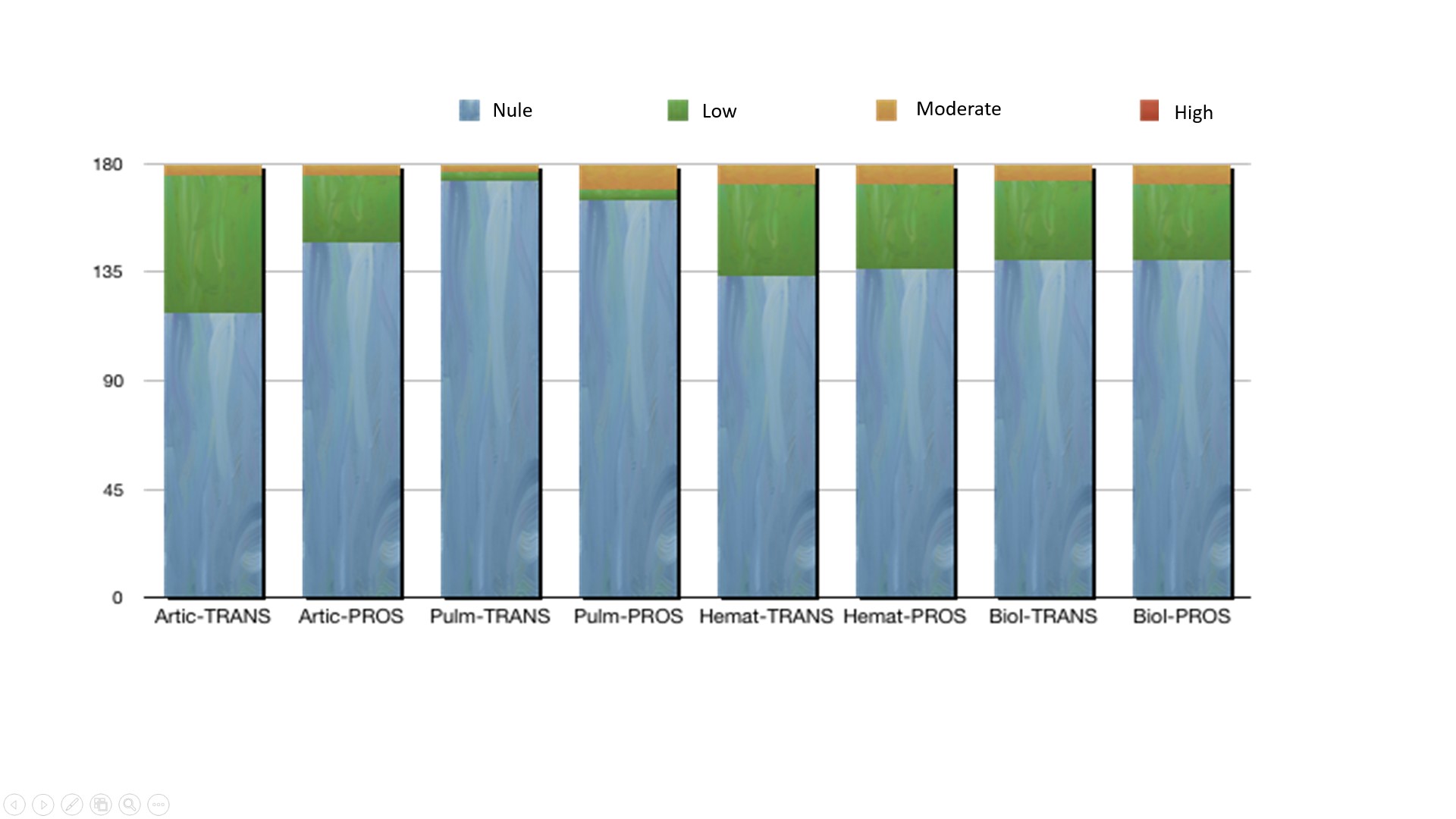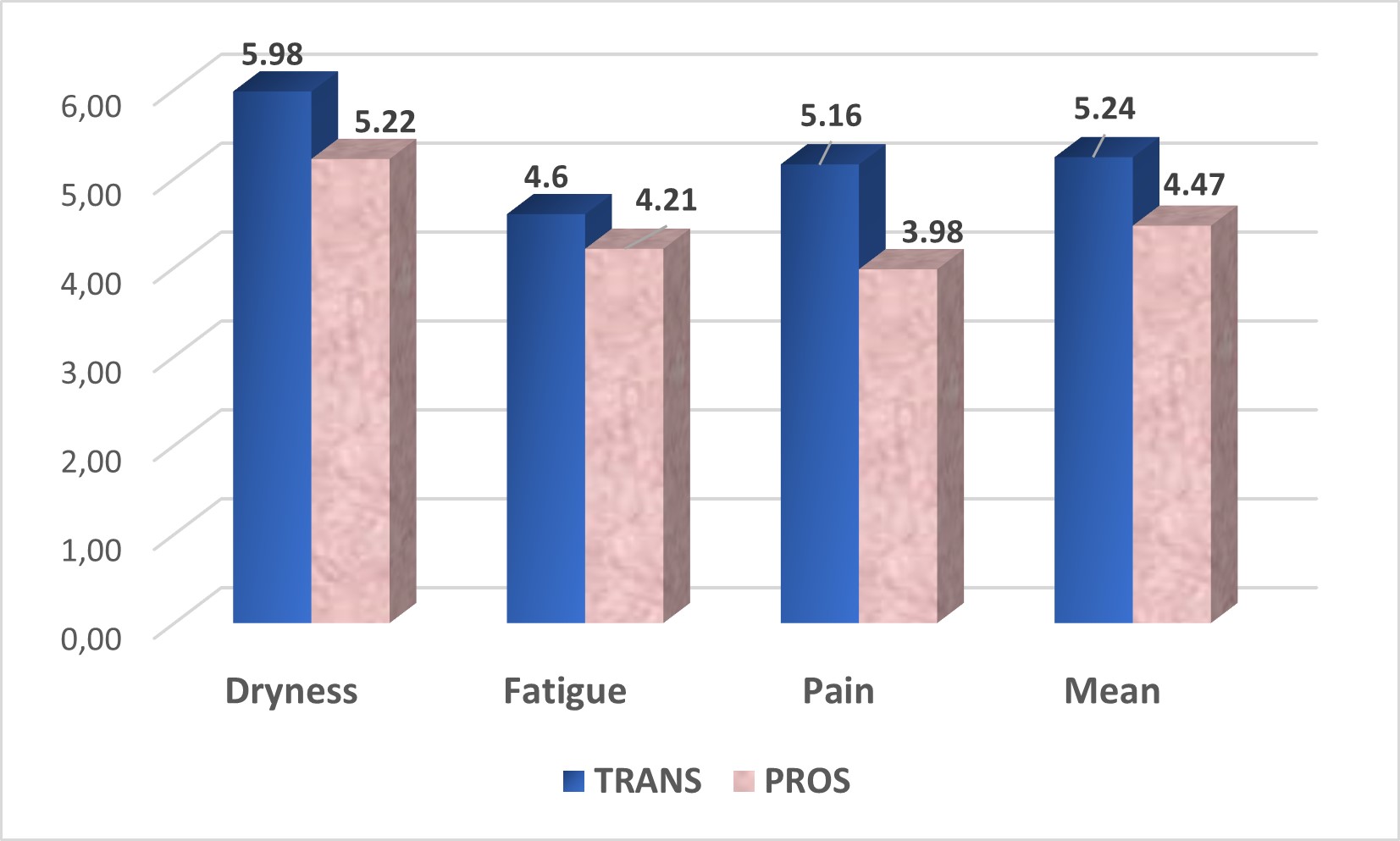Session Information
Date: Monday, November 13, 2023
Title: (1365–1382) Sjögren’s Syndrome – Basic & Clinical Science Poster I
Session Type: Poster Session B
Session Time: 9:00AM-11:00AM
Background/Purpose: Describe the evolution of patients with Sjögren’s syndrome (SS) in relation to the appearance of new systemic manifestations and disease activity, as well as factors associated with an unfavorable outcome.
Methods: SJÖGRENSER PROS (SS-PROS) is an observational, longitudinal, and multicenter study of patients with SS who met 2002 classification criteria under active follow-up in rheumatology clinics of 31 Spanish hospitals that participated in the cross-sectional phase of the study (SJÖGRENSER TRANS; SS-TRANS). For the prospective phase, an 8 years follow-up visit was performed (2021-2022) comparing the results with baseline visit (SS-TRANS 2013-2014, 437 patients). Medical history was reviewed and a medical interview was performed. Epidemiological, clinical and serological variables as well as causes of death were recorded. Continuous and categorical variables were analyzed using means, medians, and frequencies, with their respective deviations and interquartile ranges (Q1-Q3). Student’s T test was used to establish statistical associations, considering p< 0.05 significant.
Results: Up to January 2023, 180 patients have been included, 96% women, mean age 68 years (SD 11.2) and mean evolution time from diagnosis to inclusion of 18 years (SD 7.27). Newly developed systemic involvement was: joint in 47% of patients (arthritis in 17%), hematological (cytopenia) in 44%, lung involvement in 14%, renal in 13%, digestive in 17%. %, hepatic 6%, central and peripheral nervous system (NS) 4% and 3% respectively, and cardiac 2.7%; parotid inflammation was described in 13%. In the last 8 years, 3 new lymphomas have appeared (3/180, 1.6%).
Mean of the ESSDAI in SS-PROS was lower than in SS-TRANS: 2.78 (SD 4.3; 1-4) vs. 3.66 (SD 5.15; 2-4), respectively. By domains, the greatest variations were observed in the articular, hematological and biological domains; while in the rest of the domains, stability was evidenced in ≥94% of the cases (Figure 1). By organs, the most affected organ during follow-up was the lung, with 8 patients who increased the mean value of this domain.
ESSPRI mean improved: 5.24 (SD 2.35; 3.67-7) vs. 4.47 (SD 2.14; 2.67-6), respectively; being greater in the VAS of pain, 5.16 (SD 3.02; 3- 8) vs. 3.98 (SD 2.95; 1- 7), respectively (Figure 2).
Twenty-seven patients out of 180 have died since their inclusion in SS-TRANS (15%), 89% women, with a mean age of 75 years (SD 11.5; 65-84.5).
Comparing baseline data visit (SS-TRANS) from the group of deceased (during SS-PROS) and of non-deceased (remaining under follow-up in SS-PROS), we observed that age (70 years; SD 11; 59-77), disease evolution time (11.5 years; SD 8; 4-17) and ESSDAI (5.22; SD 6.35; 0-8), were higher in the deceased vs. non-deceased (age 59 years, SD 12, p< 0.001; evolution time 9 years, SD7, p=0.078; ESSDAI 3.38, SD 4.88, 0-4, p0.087). There were no differences in ESSPRI.
Conclusion: Patients with SS develop new systemic manifestations over the years, despite maintaining or improving ESSDAI, suggesting the need of a close follow-up. The ESSPRI varies little over time, which represents a great challenge for the scientific community. Mortality in this cohort is 15%. Greater age, time of evolution and baseline ESSDAI were associated with a worse outcome.
To cite this abstract in AMA style:
Fernández-Castro M, Plaza Z, Rosas J, Martinez-Taboada V, Olivé A, Menor-Almagro R, MANRIQUE S, López-González R, Erausquin C, Naranjo A, Caño-Alameda R, Gómez-Sabater S, García Vadillo J, Serrano Benavente B, Melchor S, Estrada-Alarcón P, Garcia-Aparicio A, Bohorquez C, Júdez E, Larco X, Loricera J, Alcorta Lorenzo N, Paredes Romero B, González Martín J, Blázquez Cañamero M, Ramos-Giráldez C, Alonso F, Domínguez M, Andreu-Sánchez J. SJOGRENSER Registry: Prospective Evaluation of a Cohort of Patients with Primary Sjögren’s Syndrome After 8 Years of Follow-up [abstract]. Arthritis Rheumatol. 2023; 75 (suppl 9). https://acrabstracts.org/abstract/sjogrenser-registry-prospective-evaluation-of-a-cohort-of-patients-with-primary-sjogrens-syndrome-after-8-years-of-follow-up/. Accessed .« Back to ACR Convergence 2023
ACR Meeting Abstracts - https://acrabstracts.org/abstract/sjogrenser-registry-prospective-evaluation-of-a-cohort-of-patients-with-primary-sjogrens-syndrome-after-8-years-of-follow-up/


